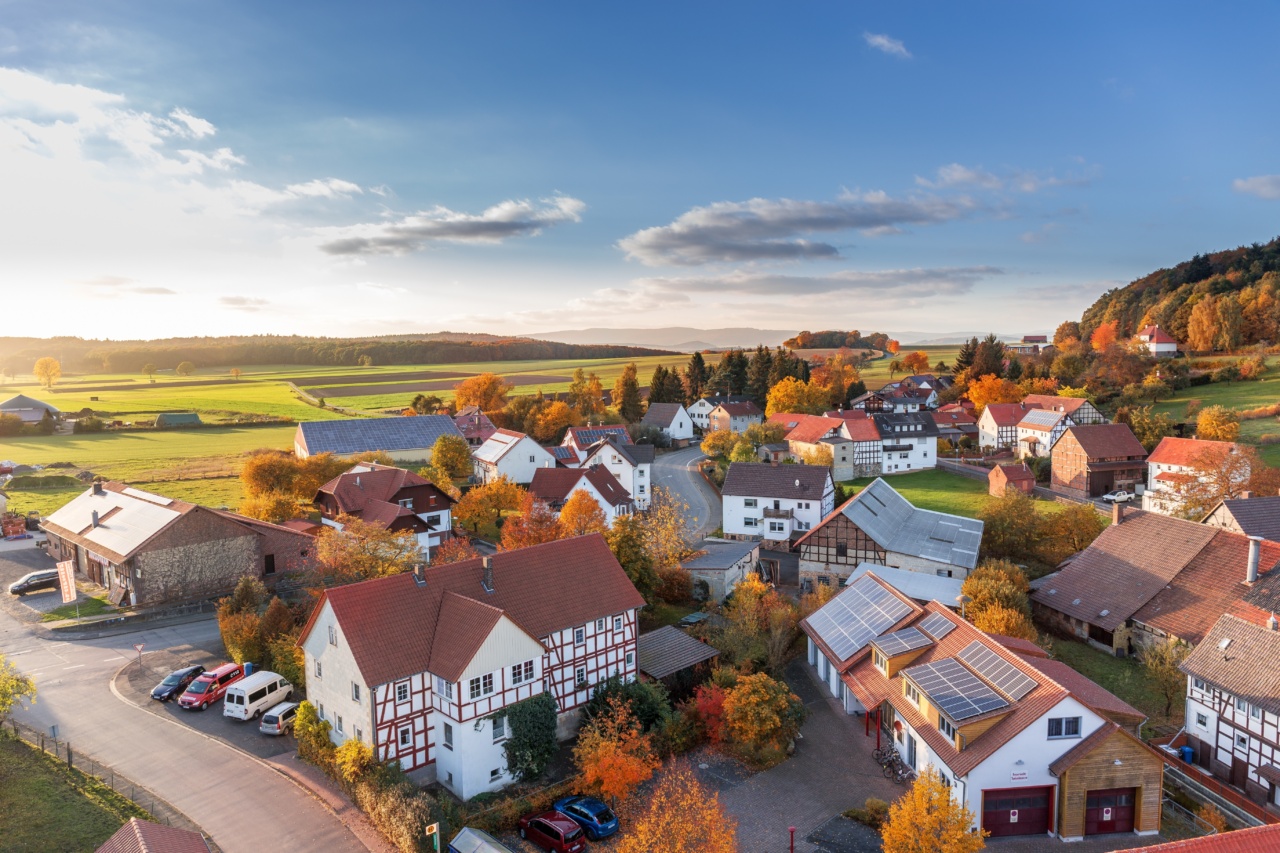When we think about creating a healthy neighborhood, we often consider factors such as clean air, access to healthcare, and community engagement.
However, one vital element in promoting overall well-being that often goes unnoticed is the presence of trees. Trees play a crucial role in shaping a healthy and sustainable neighborhood, providing numerous benefits to both the environment and the residents who call it home.
Air Quality and Climate Regulation
One of the most significant contributions of trees to a healthy neighborhood is their ability to improve air quality.
Trees act as natural filters, removing pollutants and harmful gases from the air, ultimately reducing the risk of respiratory diseases and improving lung function. They absorb carbon dioxide, a major greenhouse gas responsible for climate change, and release oxygen into the atmosphere, ensuring cleaner and fresher air for residents.
Moreover, trees play a crucial role in climate regulation. Through a process called evapotranspiration, trees release water vapor into the air, which helps cool the surrounding environment, especially during hot summer days.
By providing shade and reducing the overall temperature, trees can mitigate the effects of heatwaves and contribute to energy savings by reducing the need for air conditioning.
Enhancing Biodiversity
Trees provide a habitat for a diverse range of animal species, including birds, insects, and small mammals.
By offering food, shelter, and nesting opportunities, trees support biodiversity within a neighborhood and contribute to the overall ecological balance. This is particularly important in urban areas, where green spaces are limited, as trees offer a critical refuge for wildlife and help prevent the loss of biodiversity.
Furthermore, a healthy biodiversity promotes a healthier environment for humans as well. Birds and insects attracted to trees often aid in pollination, leading to increased fruit production and a greater abundance of flowering plants.
This not only beautifies the neighborhood but also supports the local ecosystem and provides residents with access to fresh produce.
Noise Reduction and Visual Appeal
Trees can also play a significant role in reducing noise pollution, which is a common issue in urban environments.
Their leaves, branches, and bark act as natural barriers that absorb and block sound waves, creating a more tranquil and peaceful neighborhood. This is particularly beneficial for residents living near busy roads or noisy public spaces, as trees can provide a buffer zone and contribute to a higher quality of life.
Additionally, trees contribute to the overall aesthetic appeal of a neighborhood. Green spaces filled with trees and plants have been shown to create a sense of calm and tranquility, reduce stress levels, and even improve mental health.
The visual presence of trees can also increase property values and attract potential residents, making the neighborhood a desirable place to live.
Improving Community Engagement and Social Interaction
The presence of trees in a neighborhood can foster a greater sense of community engagement and social interaction.
Parks and green spaces with trees often become natural gathering places for residents, providing opportunities for outdoor activities, picnics, and other communal events. Trees create a welcoming ambiance and offer shade and comfort, making these spaces more accessible and enjoyable for individuals of all ages.
Moreover, neighborhoods with a significant number of trees tend to encourage physical activity and promote a healthier lifestyle.
The shade provided by trees invites residents to engage in outdoor exercises, such as walking, jogging, or cycling, while also reducing the risk of sun-related health issues. This sense of community and physical well-being contributes to a healthier neighborhood overall.
Energy Efficiency and Cost Savings
Trees can play a crucial role in improving energy efficiency and reducing utility costs in a neighborhood.
By strategically planting trees to provide shade near buildings, residents can benefit from reduced energy consumption for cooling during the summer. According to the U.S. Environmental Protection Agency, well-placed trees can result in energy savings of up to 30% by reducing the need for air conditioning.
In addition to reducing energy bills, trees can also contribute to stormwater management. The root systems of trees help absorb and filter rainwater, reducing the risk of flooding and soil erosion.
This natural water management system can alleviate strain on municipal sewer systems and result in cost savings for the community.
Health Benefits for Residents
Trees have been linked to numerous health benefits for neighborhood residents. By improving air quality, reducing pollution, and providing shade, trees contribute to a healthier living environment.
Residents living in neighborhoods with a high tree canopy have been found to experience lower rates of respiratory diseases, such as asthma, as well as decreased stress and anxiety levels.
Additionally, trees can have a positive impact on mental health by creating a relaxing and aesthetically pleasing environment.
Research has shown that exposure to green spaces and nature can help reduce symptoms of depression and improve overall well-being. Trees offer a natural refuge, connecting residents with nature and providing a calming effect in the fast-paced urban setting.
Economic and Environmental Impact
The presence of trees in a neighborhood can have a positive economic impact as well. A well-maintained, green neighborhood with mature trees is highly valued by homebuyers, leading to increased property values.
Trees contribute to the overall attractiveness of a neighborhood and can even influence the decision of potential residents when choosing where to live.
Furthermore, trees can play a significant role in reducing the urban heat island effect.
This effect occurs when densely populated areas experience significantly higher temperatures compared to surrounding rural areas due to the lack of vegetation and abundance of heat-absorbing surfaces. By providing shade and cooling effects, trees can mitigate the urban heat island effect, leading to reduced energy consumption and costs for cooling communal spaces.
Conclusion
Trees play a crucial role in creating a healthy neighborhood by improving air quality, enhancing biodiversity, reducing noise pollution, and providing aesthetic appeal.
They promote community engagement, contribute to energy efficiency and cost savings, and offer numerous health benefits for residents. The economic and environmental impact of trees cannot be overlooked, as they increase property values and contribute to a more sustainable and livable neighborhood.































